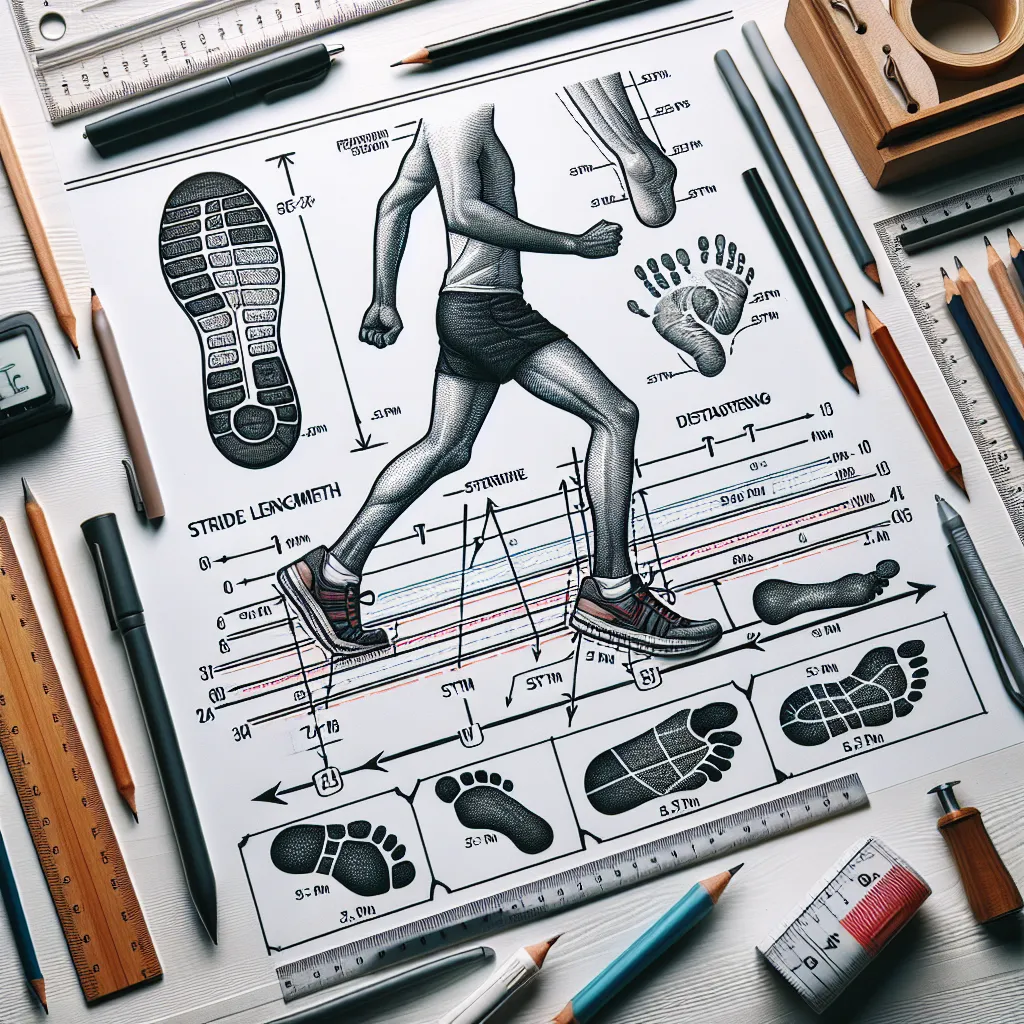Stride length is a crucial concept in biomechanics and sports science. As an IELTS candidate, understanding this term can be beneficial, especially if you’re aiming for a high score in the Reading or Writing sections. Let’s delve into the intricacies of ‘stride length’ and how to effectively use it in your IELTS preparation.
Definition and Pronunciation
Stride length (noun) /straɪd lɛŋθ/: The distance between successive points of contact of the same foot with the ground when walking or running.

Understanding the Context of ‘Stride Length’
Examples in Context
-
The athlete’s coach focused on improving her stride length to enhance her overall performance.
In this sentence, ‘stride length’ is used to describe a specific aspect of an athlete’s technique that can be improved for better results. -
Researchers found that a longer stride length often correlates with faster running speeds in sprinters.
Here, ‘stride length’ is discussed in a scientific context, highlighting its relationship with speed in sprinting. -
During the marathon, runners adjusted their stride length to conserve energy over the long distance.
This example shows how ‘stride length’ can be dynamically altered during a race for strategic purposes. -
The biomechanics expert analyzed the runner’s stride length using high-speed cameras and motion capture technology.
This sentence demonstrates the technical aspect of measuring and studying ‘stride length’ in sports science. -
In the IELTS Reading passage about running techniques, several questions focused on the concept of stride length and its impact on efficiency.
This example directly relates ‘stride length’ to the IELTS exam, showing how it might appear in a reading comprehension task.
Common Contexts
‘Stride length’ is frequently encountered in discussions about:
- Athletic performance and training
- Biomechanics and kinesiology
- Running and walking gait analysis
- Sports injury prevention and rehabilitation
- Exercise physiology and fitness studies
Analyzing ‘Stride Length’ in IELTS
In IELTS, ‘stride length’ may appear in various sections:
- Reading: Often featured in passages about sports science or biomechanics.
- Writing Task 1: Could be part of a graph or chart describing athletic performance metrics.
- Writing Task 2: Might be relevant in essays discussing sports technology or health and fitness.
- Speaking: Potentially useful in discussions about sports, exercise, or personal fitness routines.
Vocabulary Analysis
Word Structure
- Stride (noun/verb): A single step or the act of stepping
- Length (noun): The measurement or extent of something from end to end
Synonyms and Antonyms
Synonyms:
- Step length /stɛp lɛŋθ/: The distance covered in a single step.
- Gait distance /geɪt ˈdɪstəns/: The length of a complete walking or running cycle.
- Pace measurement /peɪs ˈmɛʒərmənt/: The quantification of one’s walking or running rhythm.
Antonyms:
- Stride frequency /straɪd ˈfriːkwənsi/: The number of strides taken per unit of time, often inversely related to stride length.
- Cadence /ˈkeɪdəns/: The rhythm or rate at which steps are taken, typically increased when stride length decreases.
Memorization Techniques
Mind Mapping
Create a mind map with ‘stride length’ at the center, branching out to related concepts:
- Biomechanics
- Running technique
- Athletic performance
- Gait analysis
- Injury prevention
Visualization Technique
Imagine a runner on a track, with each stride marked clearly on the ground. Visualize the distance between these marks and how they might change as the runner adjusts their technique.
Practical Application
Exercise 1: Sentence Formation
Create sentences using ‘stride length’ in different contexts:
- Sports science: _____
- Fitness training: _____
- IELTS Writing Task 2 essay: _____
Exercise 2: IELTS-style Reading Question
Read the following passage and answer the question:
“Recent studies in biomechanics have shown that optimal stride length varies among runners. Factors such as height, leg length, and running speed all play a role in determining the most efficient stride length for an individual. Coaches now use this information to tailor training programs to each athlete’s unique physiological characteristics.”
Question: According to the passage, which of the following is NOT a factor in determining optimal stride length?
A) Height
B) Leg length
C) Running speed
D) Weight
(Answer: D)
Conclusion
Mastering the concept of ‘stride length’ can significantly enhance your IELTS performance, particularly in tasks related to sports science and biomechanics. By understanding its definition, context, and application, you’ll be better equipped to tackle relevant questions in the exam.
Remember to practice using this term in your writing and speaking exercises. Consider how you might incorporate ‘stride length’ into discussions about athletic performance, fitness, or even technological advancements in sports.
Do you have any experiences with using specialized terms like ‘stride length’ in your IELTS preparation? Share your thoughts and questions in the comments below!
For more insights on sports-related vocabulary and biomechanics in sports, check out our other articles. Expanding your knowledge in these areas can give you a significant advantage in the IELTS exam.